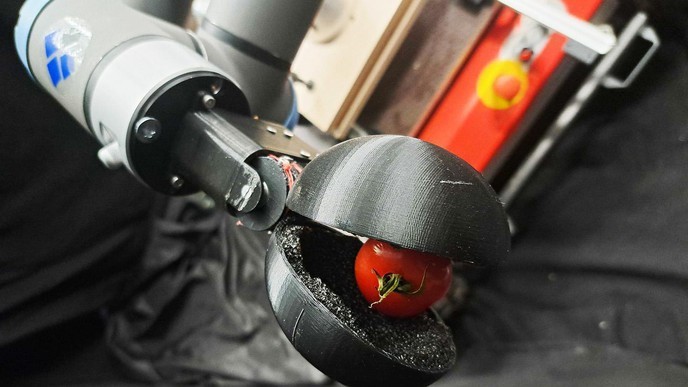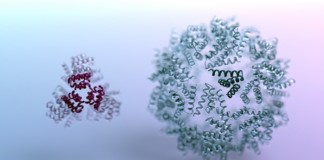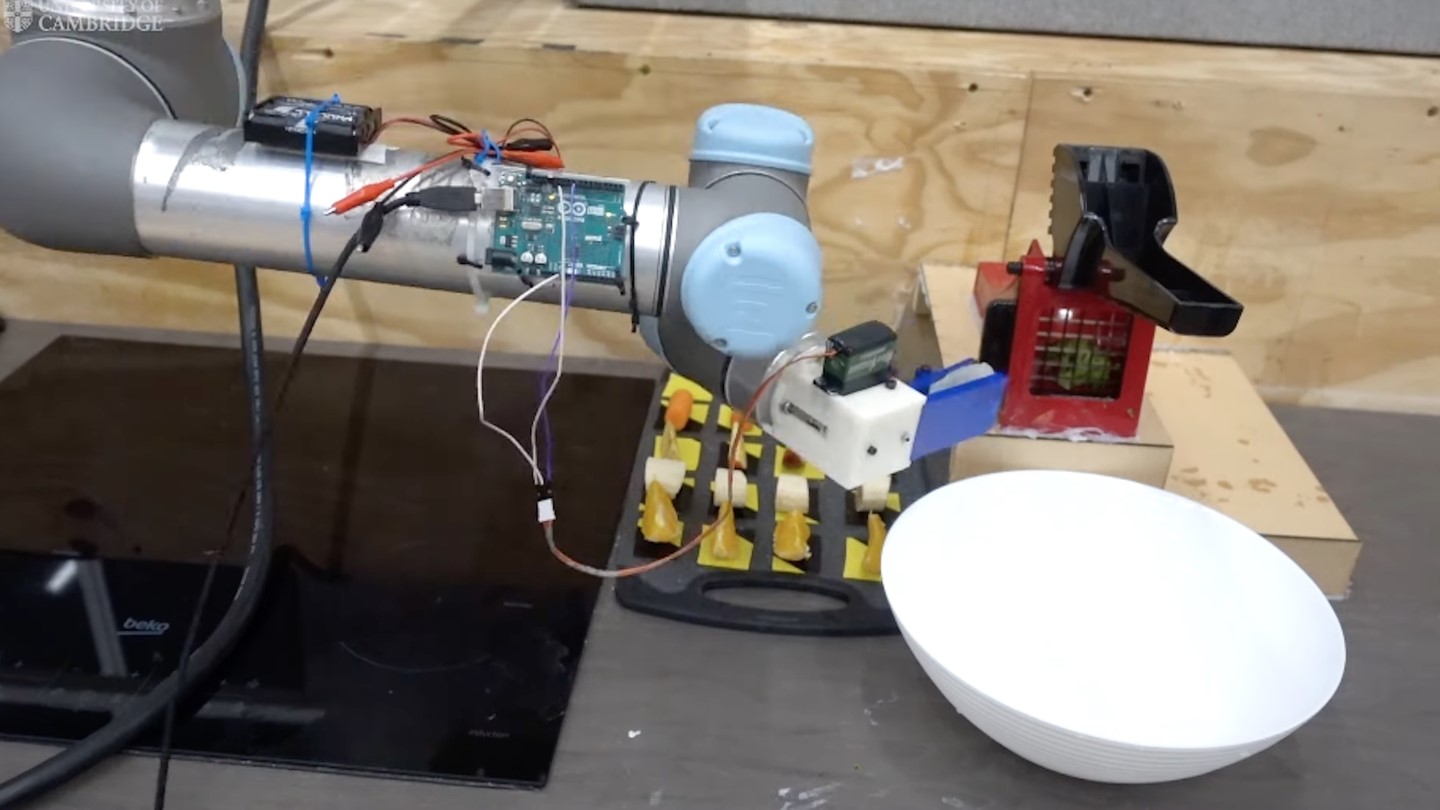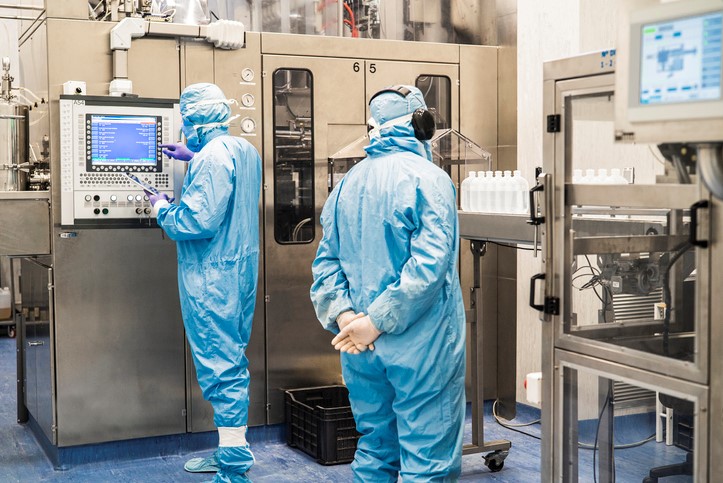Chat-GPT-3 and Robotic Grippers: A Tomato Harvesting Duo Paving the Way for Human-Robot Collaboration
Large language models (LLMs), such as Chat-GPT, have garnered significant attention for their transformative impact on writing, learning, and art creation. Now, EPFL researchers have harnessed the power of Chat-GPT to venture into a new domain: robotic design.

Figure 1. Chat-GTP-designed robot.
Figure 1 shows Chat-GTP-designed robot holding a tomato. In a groundbreaking study published in Nature Machine Intelligence, Josie Hughes, Francesco Stella (an EPFL PhD student), and Cosimo Della Santina (from TU Delft) employed Chat-GPT to collaboratively design a functional robotic tomato-harvester. This research establishes a framework for humans and LLMs to join forces in devising such innovative devices. By utilizing artificial intelligence (AI) tools in robotics, the researchers assert that the design process can be revolutionized, making it more enriching and streamlined.
Hughes emphasizes the remarkable contribution of Chat-GPT, stating, "Although Chat-GPT is a text-based language model, it offered invaluable insights and inspiration for physical design, demonstrating immense potential as a catalyst for human creativity."
The researchers embarked on two key phases in their study. Initially, they engaged in an "ideation" dialogue with Chat-GPT to define the purpose, design parameters, and specifications of their robotic creation. Subsequently, they transitioned to the realization phase, involving refining the LLM-generated code, fabricating the device, and addressing any operational challenges.
During the ideation phase, the researchers engaged Chat-GPT in discussions ranging from future global challenges faced by humanity to the potential of robotic crop harvesting as a solution to the pressing issue of food supply. Leveraging the LLM's access to vast global data sources like academic publications, technical manuals, books, and media, the researchers obtained the "most probable" answers to prompts such as "what features should a robot harvester possess?"
Once the researchers established the basic format of the robot—a motor-driven gripper for plucking ripe tomatoes—they proceeded to ask more specific questions, including inquiries about the optimal shape and technical aspects such as suitable materials and computer code for controlling the device.
Stella highlights the groundbreaking aspect of this research, stating, "While computation has primarily supported engineers in technical implementation, this marks the first instance of an AI system ideating novel systems, thereby automating high-level cognitive tasks. This could potentially lead to a shift in human roles towards more technical aspects."
In addition to Chat-GPT's role as an "inventor," the researchers outline other potential modes of collaboration between humans and LLMs in their paper. For example, "collaborative exploration" employs AI to augment researchers' expertise by contributing extensive knowledge beyond their individual domains. Additionally, AI can act as a "funnel," refining the design process and providing technical input, while humans retain creative control.
However, the researchers caution that each collaboration mode entails logical and ethical risks, underscoring the importance of carefully evaluating the role of LLMs moving forward. Questions of bias, plagiarism, and intellectual property arise when employing LLMs, as it remains unclear whether designs generated by Chat-GPT can be considered truly novel.
Hughes raises a pertinent concern, saying, "In our study, Chat-GPT identified tomatoes as the crop 'most worth' pursuing for a robotic harvester. However, this inclination may be biased towards crops that receive more extensive coverage in literature, rather than those with a genuine pressing need. Decisions made outside the engineer's domain expertise can lead to significant ethical, engineering, or factual errors."
Despite these cautionary notes, Hughes and her team conclude, based on their experiences, that LLMs hold immense potential for positive change when managed effectively. They emphasize the need for the robotics community to harness the power of these remarkable tools to accelerate advancements in an ethical, sustainable, and socially empowering manner.
Source: EPFL
Cite this article:
Hana M (2023), Chat-GPT-3 and Robotic Grippers: A Tomato Harvesting Duo Paving the Way for Human-Robot Collaboration, AnaTechMaz, pp.300















